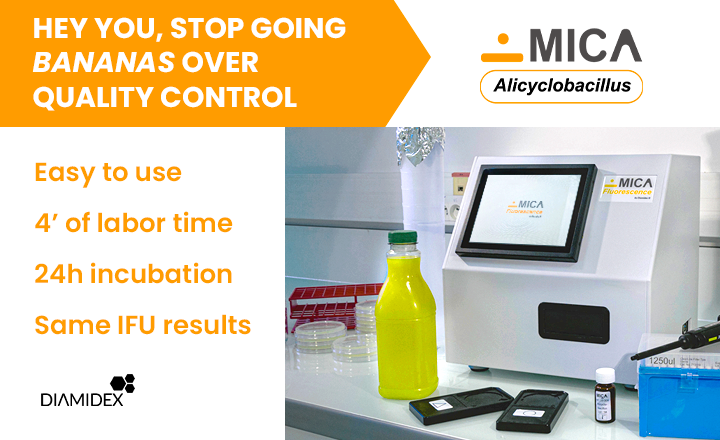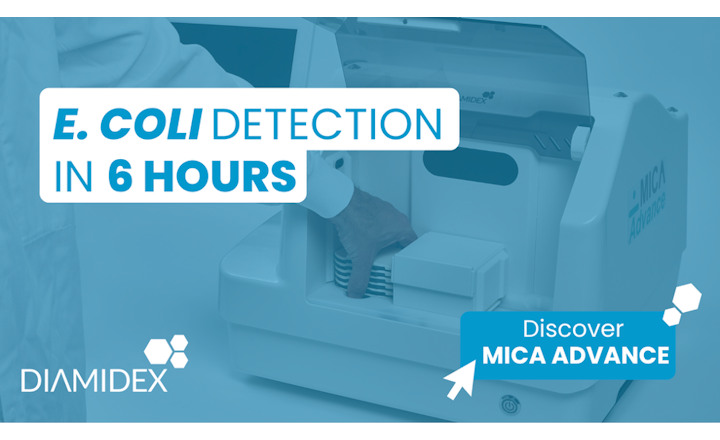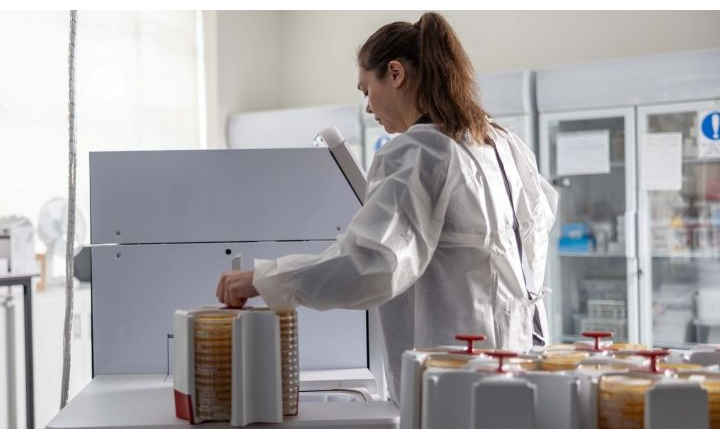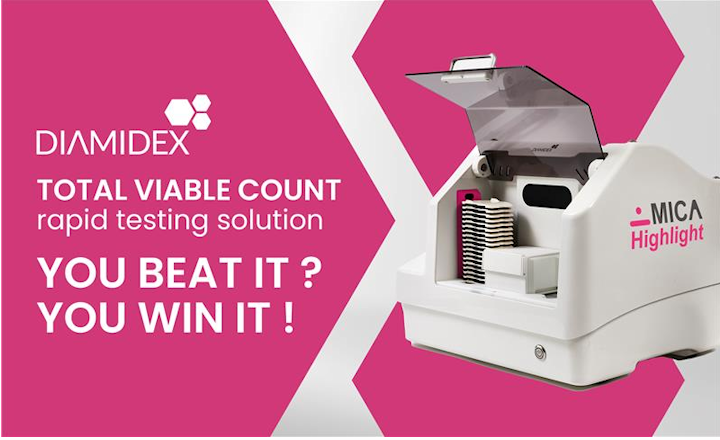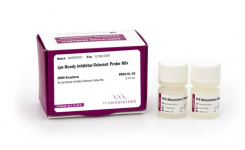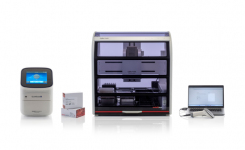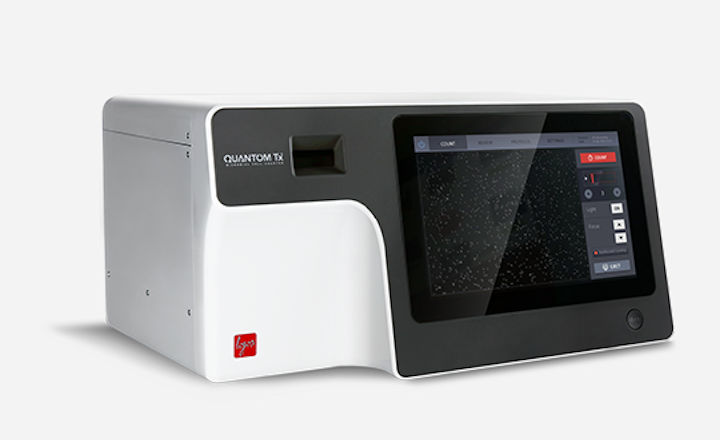
The QUANTOM Tx Microbial Cell Counter is an effective, accurate, and rapid way to quantify bacteria of various morphologies and arrangements. In this application note summary, it is compared with three common bacterial detection and quantification methods.
Colony Count - One of the most common methods to quantify bacteria is counting colony-forming units (CFUs). This widely used method is simple, gives a good general idea of cell viability, and is sensitive even to low concentrations of bacteria. However, this method is dependent on growth media and conditions as well as being limited to culturable bacteria, which excludes viable but not culturable (VBNC) strains. Another major disadvantage is that it takes days to get results that are estimations at best.
Hemocytometer - Speciality hemocytometers (Petroff-Hausser and Levy counting chambers) are used to directly count bacteria under a microscope. This gold standard of cell counting is a relatively rapid and easy way to get results, but it is labour intensive and prone to user-to-user variability.
Flow cytometry - Flow cytometry is recognized as one of the most accurate ways to determine total and viable cell counts. On the other hand, flow cytometry requires extensive training to operate the instrument as well as analyse the data. Similar to colony counting, a significant limitation of flow cytometry is that it cannot distinguish between a single cell or a cluster of cells.
QUANTOM Tx™ Microbial Cell Counter - The QUANTOM Tx Microbial Cell Counter is an image-based, automated cell counter that can identify and count individual bacterial cells in minutes. The QUANTOM Tx automatically focuses in on, captures, and analyses multiple images of fluorescence-stained cells to detect bacterial cells with high sensitivity and accuracy. The sophisticated cell detection and declustering algorithm that can accurately identify individual bacterial cells in even the tightest clusters. Utilising two different stains, the QUANTOM Tx can count total cells or viable cells.
Accurate determination of standard bead counts by the QUANTOM Tx
The counting accuracy of the QUANTOM Tx was confirmed by counting standard fluorescent beads of known concentration.
![]()
Accuracy and variability compared to a flow cytometer and a hemocytometer
To compare the accuracy of the QUANTOM Tx compared to a flow cytometer and hemocytometer, serial dilutions of Escherichia coli were counted in triplicate.
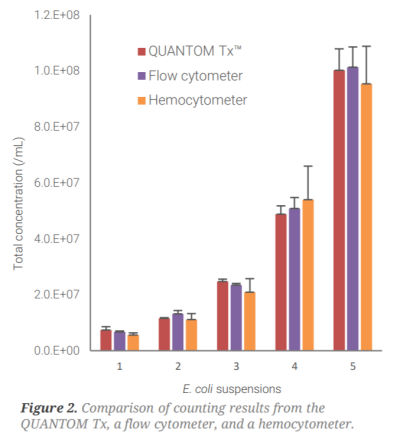
There was no significant difference in the total concentrations, but the hemocytometer showed a higher variability from count to count as cell concentration increased whereas the QUANTOM Tx and flow cytometer had more consistent results
Adjustable protocols detect bacterial cells of various morphologies and arrangements
To demonstrate the versatility of the QUANTOM Tx, various bacteria species were stained with QUANTOM Total Staining Dye and counted with the QUANTOM Tx.
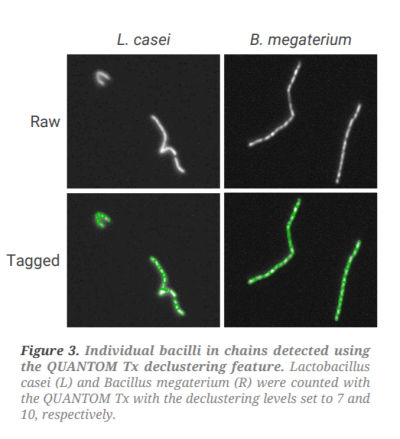
QUANTOM Tx was able to distinguish individual cells in the tight bacilli chains.
Conclusion
Bacteria are an incredibly diverse group of organisms that come in a variety of shapes, sizes, and arrangements, making automated cell counting a challenging feat. The ubiquitous colony counting method is a time-consuming, unreliable estimation at best. Even flow cytometers register each particle, single or clustered, as a single event. Hemocytometers are time consuming and prone to user-to-user variability. The QUANTOM Tx Microbial Cell Counter is an effective, accurate, and rapid way to quantify bacteria of various morphologies and arrangements. This makes the QUANTOM Tx an important and necessary tool for immediate, real-time assessment of the bacterial population within a sample.
Download the complete Application Note here:






